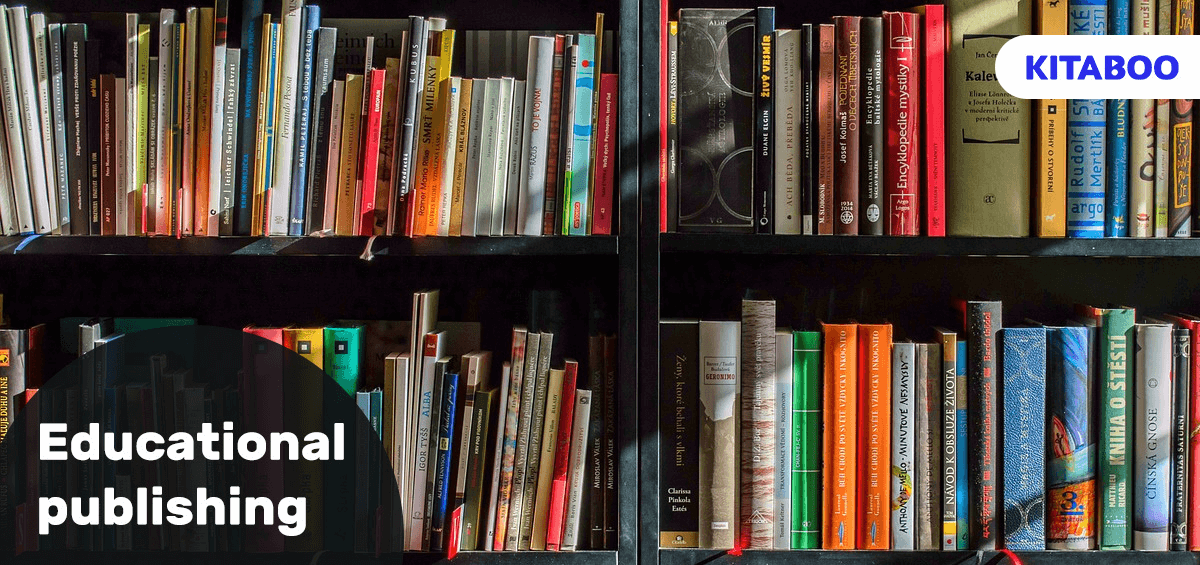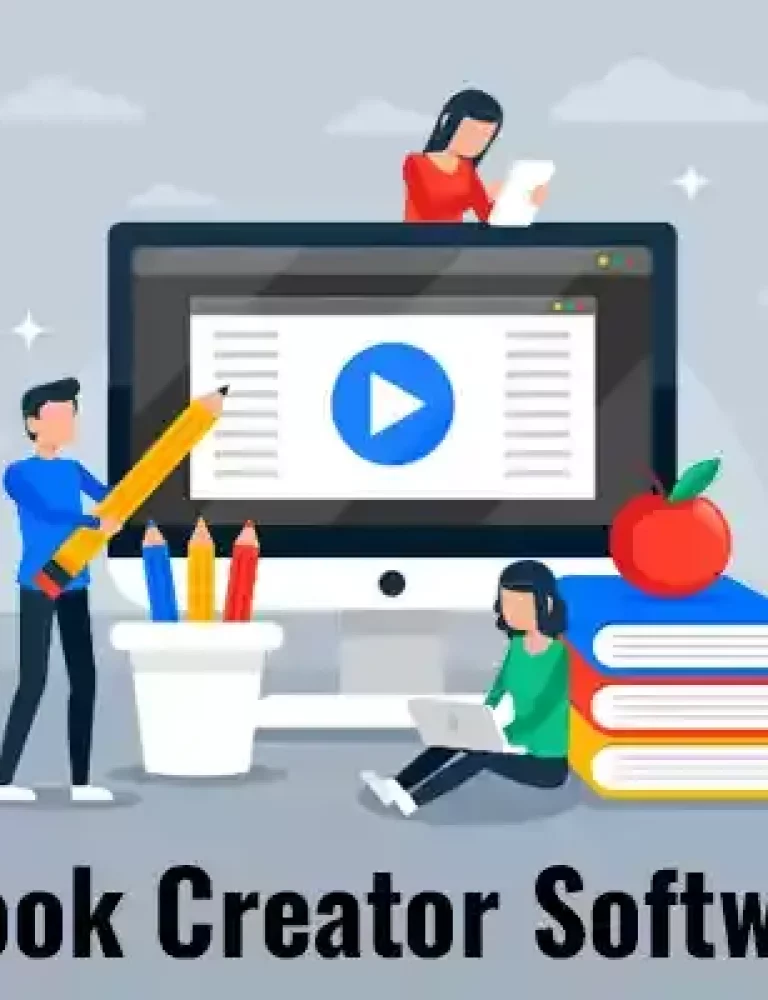The educational publishing sector is undergoing a massive transformation. Traditional businesses are acknowledging the influence of digital, while new-age publishing companies are making digital their core focus.
To mark these shifts, the demand for educational products continues to grow, with learners seeking new and innovative products that enhance the learning process. The value of the global digital educational publishing market was pegged at $9.9 billion in 2021. By 2031, it is expected to grow to $41.5 billion, accelerating at a compound annual growth rate of 15.9%.
This blog delves into the top trends that can help educational publishers keep pace with evolving learning needs through the effective use of technology.
Table of Contents
I. Growth of Educational Publishing
II. Upcoming Trends in Educational Publishing
- Shift to Digital Publishing
- Growing Popularity of eBooks
- eBooks Get Interactive
- Growth of Mobile-First Content Design
- High-Quality On-Demand Learning Resources
- AI-Driven Adaptive Learning
- Accessible Content Goes Mainstream
- Growing Focus on Secure Content Distribution
- Streamlined Educational Publishing Operations
III. Conclusion
Growth of Educational Publishing
The education sector has experienced immense disruption due to the changing needs of learners. Today, learning has become a way of life that extends beyond K12 and higher education. Learning continues even after students graduate from schools and colleges and begin their professional lives.
On the other hand, many learners remain underserved due to the lack of an accessible and supportive learning environment.
The education publishing sector seeks to bridge these gaps and become more invested in how it responds to real-time learner needs.
Upcoming Trends in Educational Publishing
A glimpse into the future of educational publishing and how it is transforming the way we learn:
Shift to Digital Publishing
For decades, educational publishers have focused on developing physical textbooks and guides. With the growth of the internet, more traditional publishers are now shifting to producing digital products. Digital gives publishers greater flexibility to reimagine learning content and make it more engaging and effective.
Publishers can produce everything from eBooks and e-courses to individual pieces of interactive content. Education publishing companies are reinventing their business models, putting digital at the center of it.
Growing Popularity of eBooks
A growing number of learners at all levels of education are shifting from physical textbooks to eBooks. The reasons are multifold. eBooks are much more cost-effective and come with additional features. For instance, an eBook can hyperlink to additional sources of information on the internet, track reader engagement, incorporate multimedia elements, and much more. The interconnectedness of eBooks makes them much more conducive to learning.
eBooks Get Interactive
Over the last few years, eBooks have seen a lot of innovation. One of the biggest shifts is that eBooks have become much more interactive. They are no longer just PDF versions of physical books. It is a complete and unique product in itself. For instance, today, all concepts in an eBook can be explained by videos, audio representations, interactive quizzes, and other types of multimedia content.
Growth of Mobile-First Content Design
With the growth of mobile penetration, an increasing number of mobile owners prefer to learn via their cell phones. Learning on mobile devices brings a lot of flexibility to learn at one’s convenience. This trend has given rise to another trend known as microlearning.
Learners can spend a few minutes daily on their devices learning from content ranging from a few seconds to a few minutes. Hence, educational publishers are focusing on building mobile-friendly, bite-sized content that serves the purpose of micro-learning goals.
Also Read: Interactive Digital Textbooks
High-Quality On-Demand Learning Resources
Learners today like to have access to high-quality learning resources at their fingertips. Educational publishers are building a mix of engaging resources that learners can use no matter what program or level of education they are pursuing. Educators recommend such resources to supplement classroom lectures and make the absorption of concepts easier. With access to such resources, self-learning is also a growing trend.
AI-Driven Adaptive Learning
Another growing trend in educational publishing is the ability of educational courses to adapt to the learner’s progress. Technologies like artificial intelligence (AI), machine learning (ML), automation, and natural language processing (NLP) are paving the way for adaptive learning. Hence, all learners are not fed a one-size-fits-all program. Instead, the lessons automatically adapt based on the learner’s skill and knowledge.
Accessible Content Goes Mainstream
There’s a growing awareness about the need to make knowledge and skills accessible to all learners. Technology is helping bridge the gaps that have proven to be barriers for learners with disabilities, learning challenges, and language barriers, among others.
Today, content is being made a variable in multiple formats, from video and text to audio representations and animation. Technology is making it easy to publish content in multiple languages and also building accessibility features such as font adjustment, alternative text, and more.
Growing Focus on Secure Content Distribution
Another area where digital educational publishing has experienced innovation is the growth of digital rights management systems. Today, publishers can securely distribute content to authorized users. It is becoming more challenging to duplicate and plagiarize content. Such a system also helps protect revenues and stay sustainable as a business
Streamlined Educational Publishing Operations
The production, creation, publishing, and distribution of high-quality educational content also require access to digital solutions that streamline the process. Today, educational publishers have access to state-of-the-art cloud-based digital publishing suites that bring efficiency to operations. Such solutions offer publishers a lot of flexibility to experiment with content. They can leverage the power of AI-driven data analytics to study existing consumer trends and predict future ones.
Conclusion
Tech-driven educational publishing is geared to put the learner at the center of all its strategies. Access to learner data is one of the biggest advantages of informing educational publishers of the effectiveness of their products. Educational products today can be more accessible and effective in helping learners develop their full potential.
Digital Textbook Platforms such as KITABOO enable education providers and institutes to customize their products and make them more relevant to a wide spectrum of learners.
Reach out to start a conversation, and let us help you build the digital publishing capabilities of the future.
Suggested Reads:
Discover How An Ebook Conversion, Publishing & Distribution Platform Can Help You
Kitaboo is a cloud-based content platform to create-publish & securely distribute interactive mobile-ready ebooks.
You May Also Like








